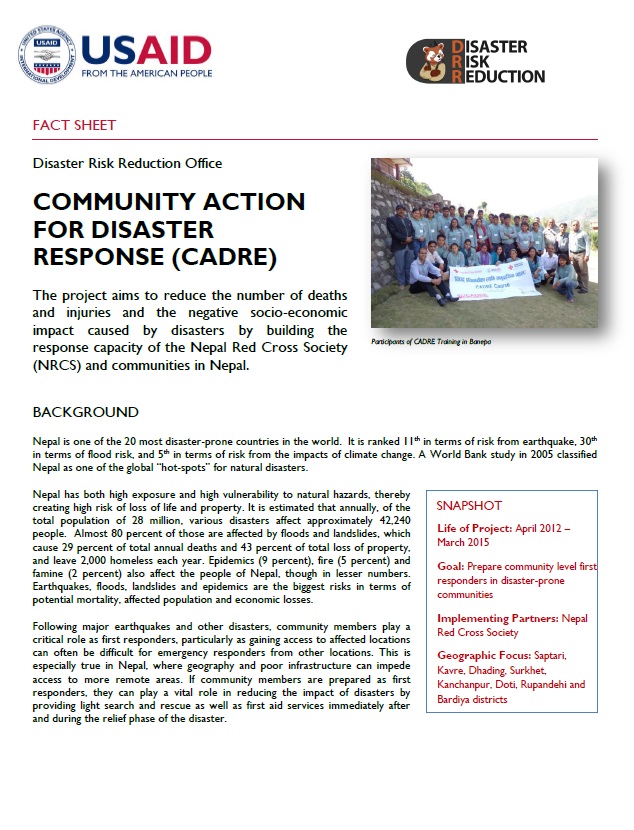BACKGROUND
Nepal is one of the 20 most disaster-prone countries in the world. It is ranked 11th in terms of risk from earthquake, 30th in terms of flood risk, and 5th in terms of risk from the impacts of climate change. A World Bank study in 2005 classified Nepal as one of the global “hot-spots” for natural disasters.
Nepal has both high exposure and high vulnerability to natural hazards, thereby creating high risk of loss of life and property. It is estimated that annually, of the total population of 28 million, various disasters affect approximately 42,240 people. Almost 80 percent of those are affected by floods and landslides, which cause 29 percent of total annual deaths and 43 percent of total loss of property, and leave 2,000 homeless each year. Epidemics (9 percent), fire (5 percent) and famine (2 percent) also affect the people of Nepal, though in lesser numbers. Earthquakes, floods, landslides and epidemics are the biggest risks in terms of potential mortality, affected population and economic losses.
Community Action For Disaster Response (CADRE) ![]() (pdf - 189k)
(pdf - 189k)
Following major earthquakes and other disasters, community members play a critical role as first responders, particularly as gaining access to affected locations can often be difficult for emergency responders from other locations. This is especially true in Nepal, where geography and poor infrastructure can impede access to more remote areas. If community members are prepared as first responders, they can play a vital role in reducing the impact of disasters by providing light search and rescue as well as first aid services immediately after and during the relief phase of the disaster.
PROJECT OVERVIEW
Implemented through a “training of trainer” approach, the CADRE trainings teach basic life support skills, such as triage, mitigation measures, community incident command systems, light search and rescue, and management of dead bodies. CADRE trainings focus on specific local hazards relevant to vulnerable communities. The project aims to:
- Enhance community-level first responder capacity in disaster-prone communities in Nepal.
- Reduce the number of deaths and injuries and the socio-economic impact caused by disasters by building the response capacity of the Nepal Red Cross and communities in Nepal.
To Learn more, download the factsheet (pdf).








Comment
Make a general inquiry or suggest an improvement.